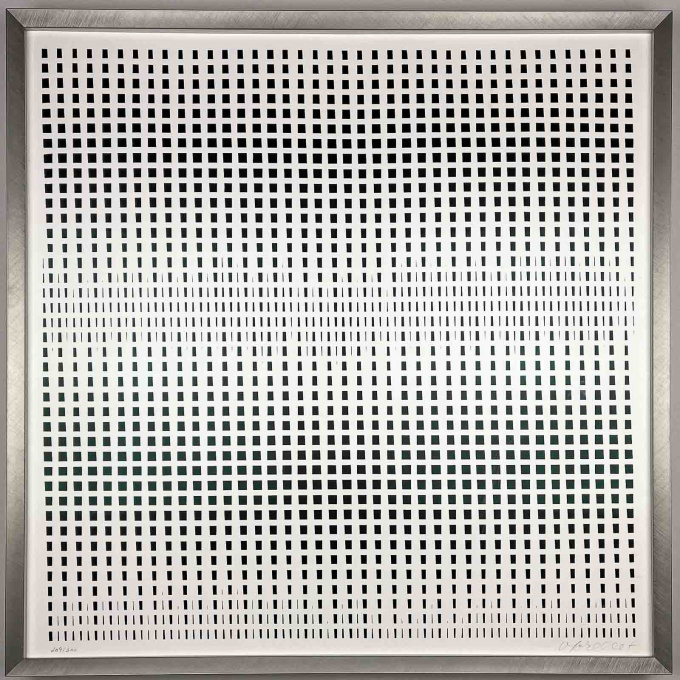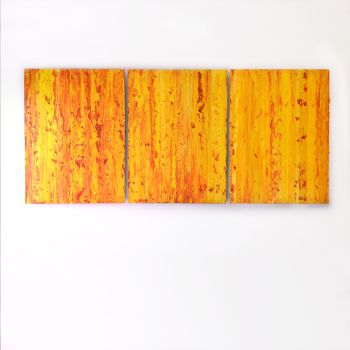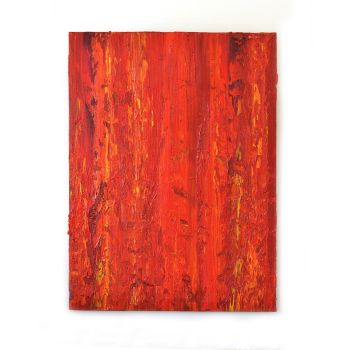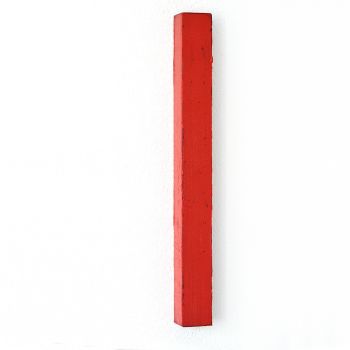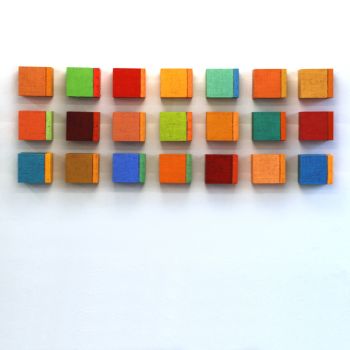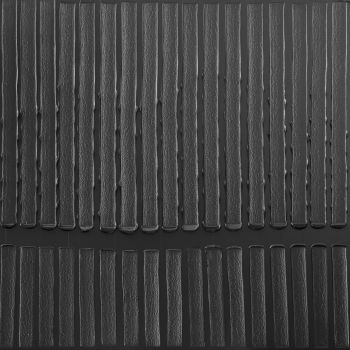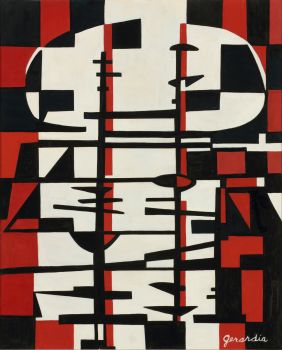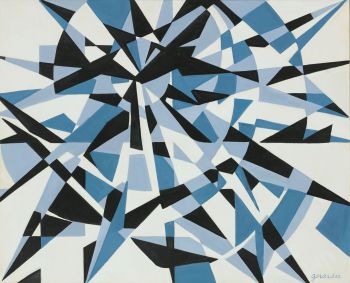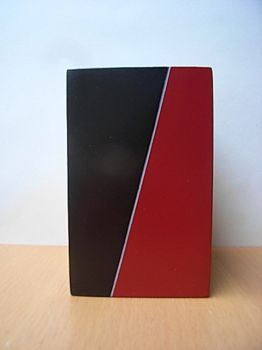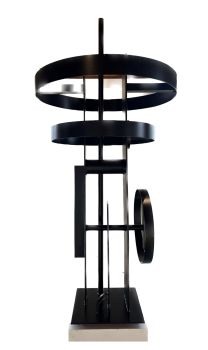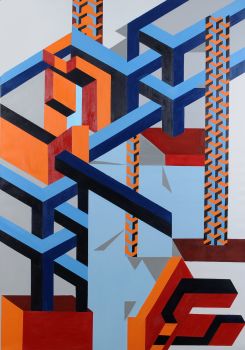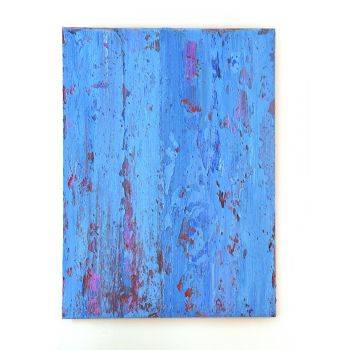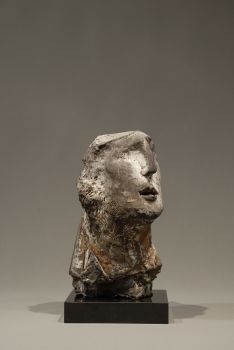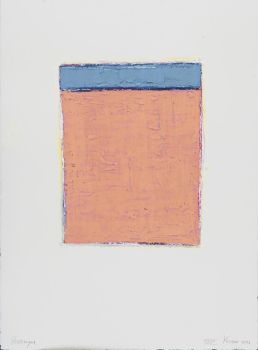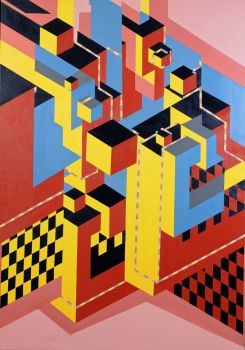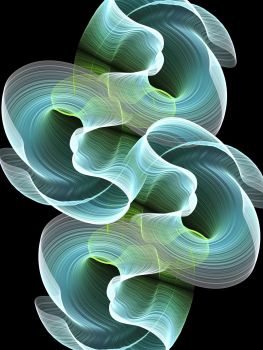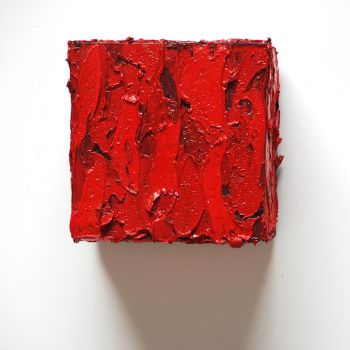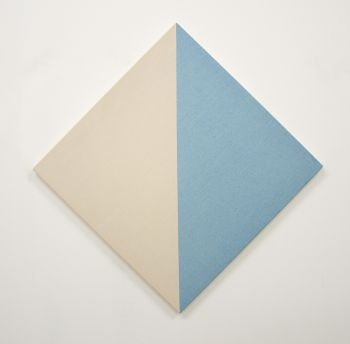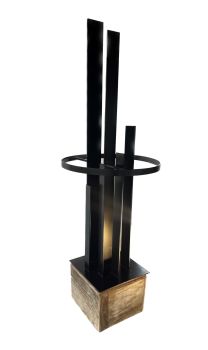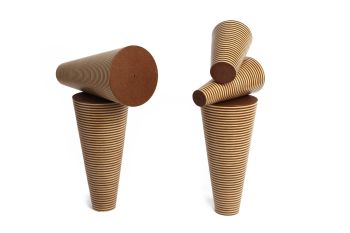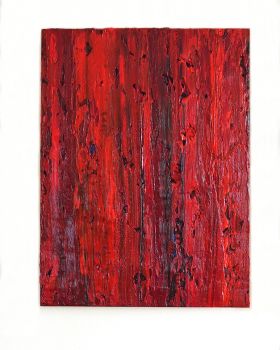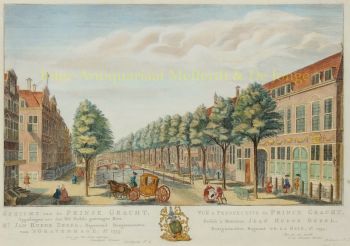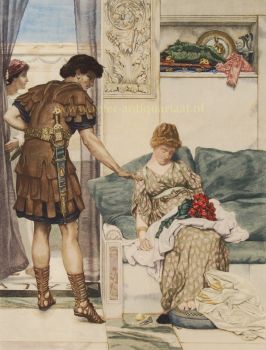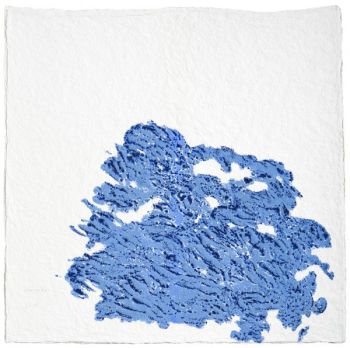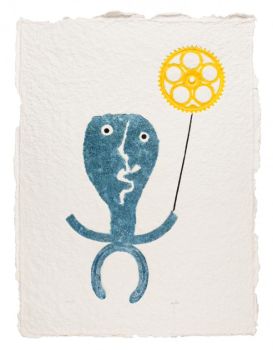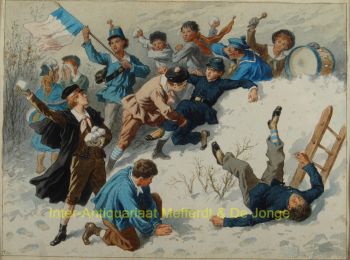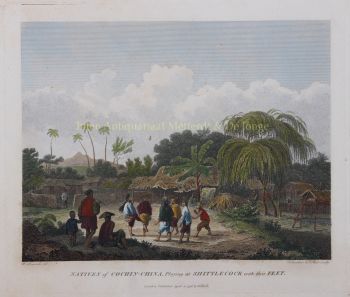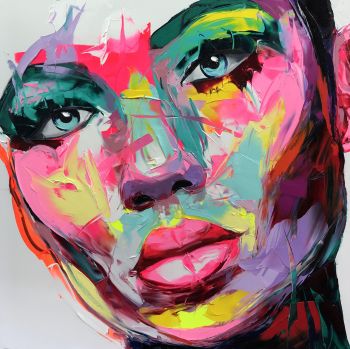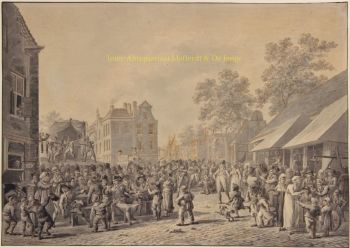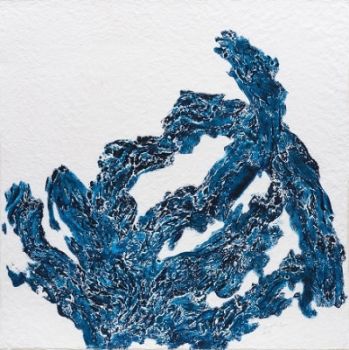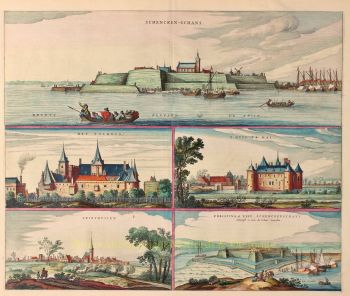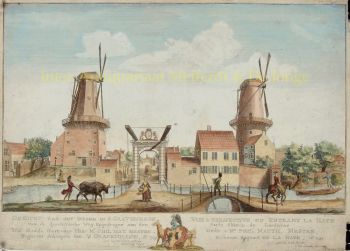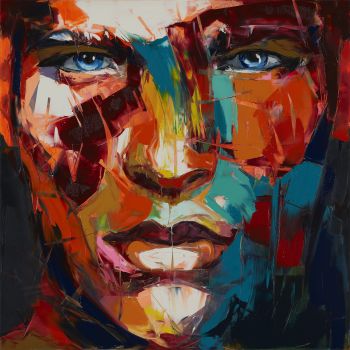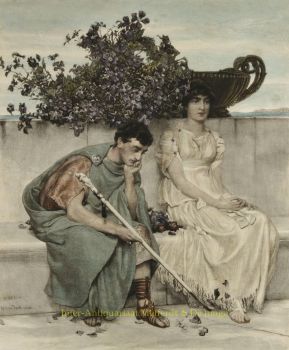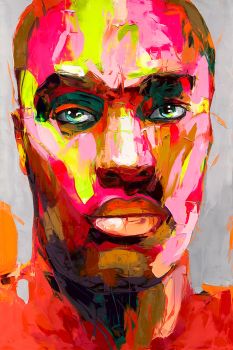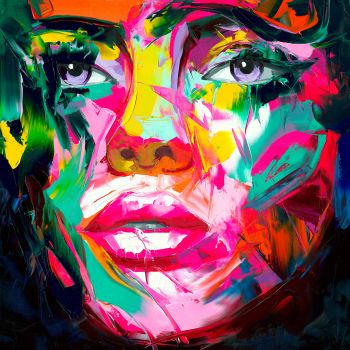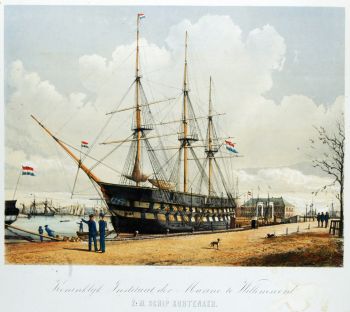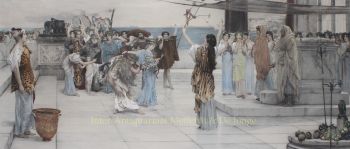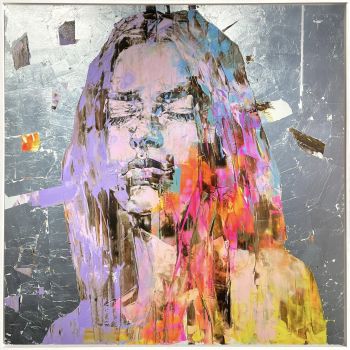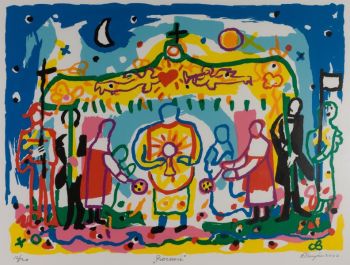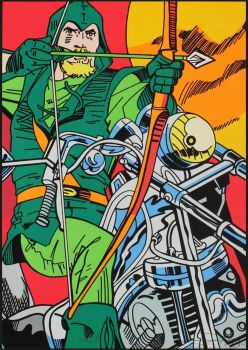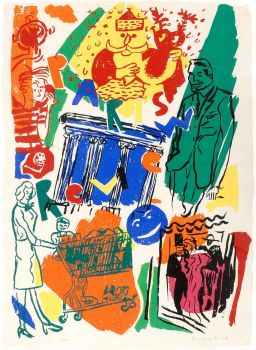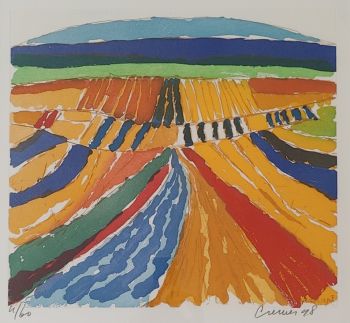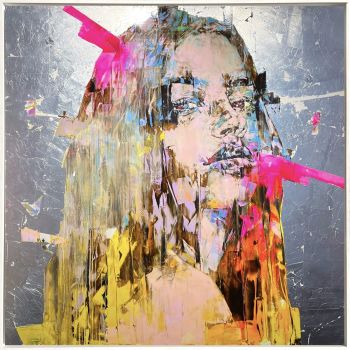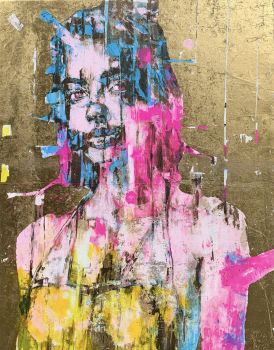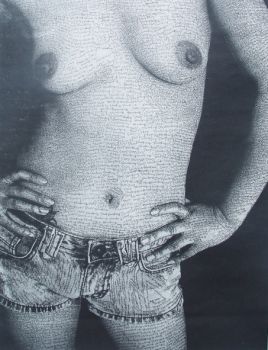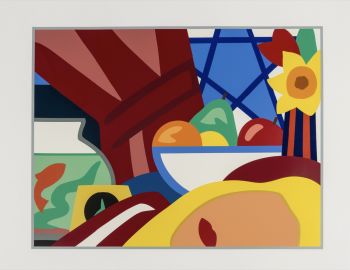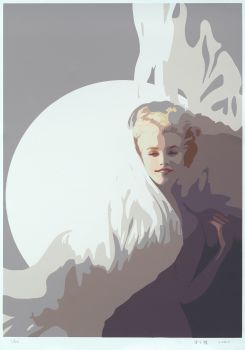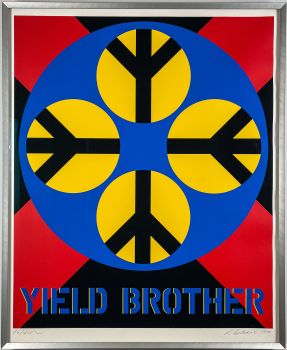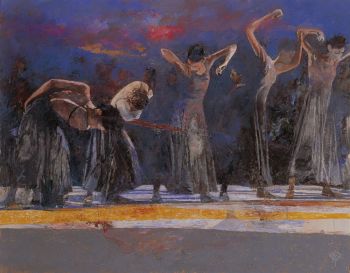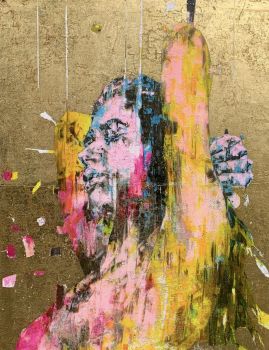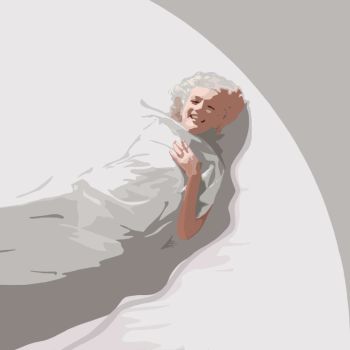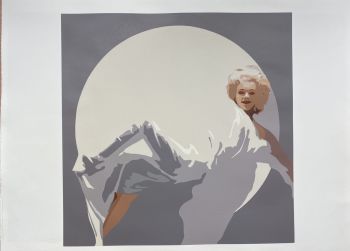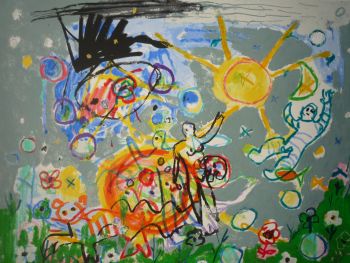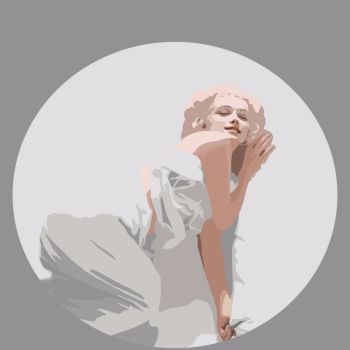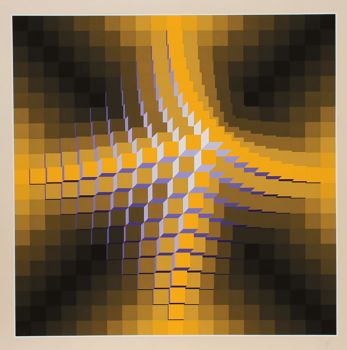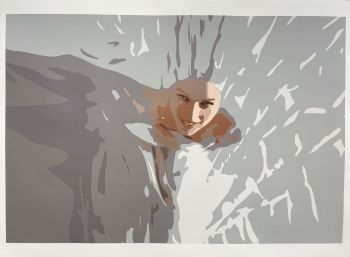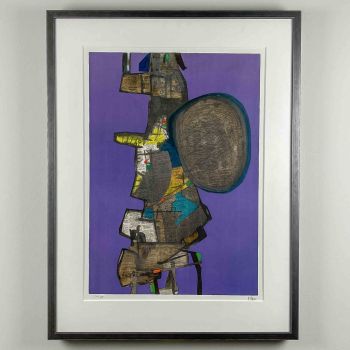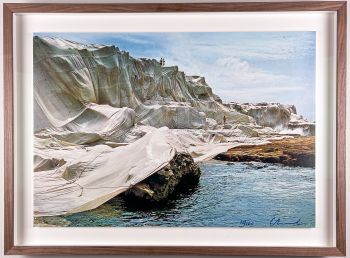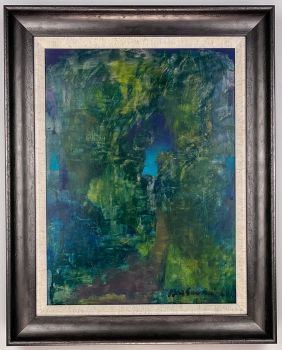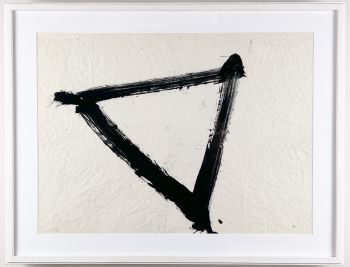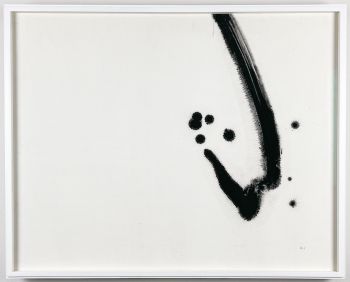“Trames” 1970 – silkscreen on wove paper, framed museumglass 1970
François Morellet
PapierImprimerSérigraphie
67 ⨯ 67 ⨯ 6 cm
ConditionVery good
€ 1.750
Van Kerkhoff Art
- Sur l'oeuvre d'artSilkscreen op wove paper, printed in 1970. Signed and numbered (209/300) by the artist in pensil.
Professionally framed in brushed aluminium frame with museumglass.
About François Morellet
François Morellet (Cholet 1926 – Cholet 2016) was a French painter, sculptor, and light artist. François Morellet ‘s early work prefigured minimal art and conceptual art, and he played a prominent role in the development of geometrical abstract art.
Morellet began his artistic career – still working in his parents’ business – as a autodidact painter. His work was influenced by the work of the Dutch painter Piet Mondriaan and by the French painter Pierre Dmitrienko (Nouvelle École de Paris).
As early as 1950 he called himself an abstract painter and around that time he already had his first exhibition at Galerie Creuze in Paris. His first “sphère trame” dates from this period.
In the 1960’s, together with artists such as Francisco Sobrino, Horacio Garcia Rossi, Julio Le Parc, Yvaral and Joël Stein, he started experimenting with kinetic art within the artists’ group “Groupe de Recherche d’Art Visuel”, which wanted to experimentally explore the possibilities of visual art in a scientific way. He also participated in the international movement “Nouvelle Tendance”.
In 1963, Morellet began to create light objects using neon tubes after the example of the American Dan Flavin. From the end of the sixties, Morellet started to occupy himself with art in relation to architecture and art in public spaces. Examples of these projects are: the Centre Culturel in Compiègne, the La Défense district in Paris and contributions to the sculpture park of the Kröller-Müller Museum in Otterlo.
Morellet’s work is considered to be geometric abstraction and it fits in with the minimalism of Donald Judd, Ellsworth Kelly, Sol LeWitt and Frank Stella. At the same time, there is an affinity with Dadaism.
Many international musea represent Morellet’s work, among many others: Centre Pompidou, Paris; Tate Gallery, London; MoMa, New York; Los Angeles Museum of Art (Lacma); The Tel Aviv Museum and Nationalgalerie, Berlin.
Signed
Signed and numbered (209/300) by the artist in pensil.
Condition
Very good condition, full margins.
Dimensions
Sheet
Height 64 cm
Width 64 cm
Frame
Height 67 cm
Width 67 cm
Depth 6 cm - Sur l'artiste
François Morellet (30 avril 1926 à Cholet - 11 mai 2016) était un artiste français. Il a été actif dans diverses formes d'art tout au long de sa carrière, notamment la peinture, l'art de la lumière, la sculpture et les arts graphiques.
Morellet a commencé sa carrière artistique tout en travaillant dans l'entreprise de ses parents, en tant que peintre. À partir de 1948, il apprend à peindre en autodidacte et quelques années plus tard, il est apprenti chez un peintre professionnel.
Son travail a été influencé par des artistes tels que Piet Mondrian et le peintre Pierre Dmitrienko (Nouvelle École de Paris). Il s'est qualifié de peintre abstrait dès 1950 et a eu sa première exposition à la galerie Creuze à Paris à cette époque. Sa première sphère trame date de cette époque.
Dans les années soixante, il a commencé à expérimenter l'art cinétique avec des artistes tels que Francisco Sobrino, Horacio Garcia Rossi, Julio Le Parc, Yvaral et Joël Stein, au sein du groupe d'artistes Groupe de Recherche d'Art Visuel. Ce groupe voulait étudier scientifiquement les possibilités de l'art visuel de manière expérimentale. Il a également participé au mouvement international Nouvelle Tendance.
En 1963, Morellet se lance dans la fabrication d'objets lumineux à base de tubes néons, inspirés par l'américain Dan Flavin. Dès la fin des années 1960, Morellet s'intéresse à l'art en relation avec l'architecture et l'art dans l'espace public. Des exemples de ces projets sont le Centre Culturel de Compiègne, le quartier de La Défense à Paris et les contributions au parc de sculptures du Musée Kröller-Müller à Otterlo.
Le travail de Morellet est classé dans l'abstraction géométrique et correspond bien au minimalisme de Donald Judd, Ellsworth Kelly, Sol LeWitt et Frank Stella. En même temps, il montre une parenté avec le dadaïsme.
Un exemple typique de son travail est NoEndNeon au Zentrum für Internationale Lichtkunst à Unna, où il a réalisé cette installation spécialement pour un espace souterrain du musée d'art de la lumière.
Êtes-vous intéressé par l'achat de cette oeuvre?
Artwork details
Related artworks
- 1 - 4 / 24
- 1 - 4 / 24
- 1 - 4 / 24
- 1 - 4 / 12

